
Cory’s shearwater (Calonectris borealis) - a fascinating and emblematic seabird
Cory’s shearwater belongs to a group of seabirds (Procellariiformes) that includes albatrosses, shearwaters and petrels. All these birds have tubular nostrils, which are two tube-shaped nasal passages located at the top of the beak, through which they expel ingested salt.
Cory’s shearwater is the most characteristic seabird of the Azores and one of the oldest species on the planet. They spend most of their lives at sea (pelagic birds), coming ashore only to reproduce, build nests, mate, incubate their eggs, and care for their young.
Interesting facts
While in the archipelago, it is common to see groups returning to their colonies, emitting very characteristic vocalizations both in flight and at their nests. Between March and October, the “song of the Cory’s shearwaters” can be heard throughout the islands. Males produce a higher-pitched, longer call than females, resembling the croak of a frog or the meow of a cat.
Distribution
During the nesting season, their range includes temperate and subtropical areas of the North Atlantic and Mediterranean. Cory’s shearwater migrates long distances to southern regions or even to the east coast of North America. In Portugal, they nest in the Azores, Madeira, the Berlengas, and the Desertas and Selvagens Islands.
Life in the Azores
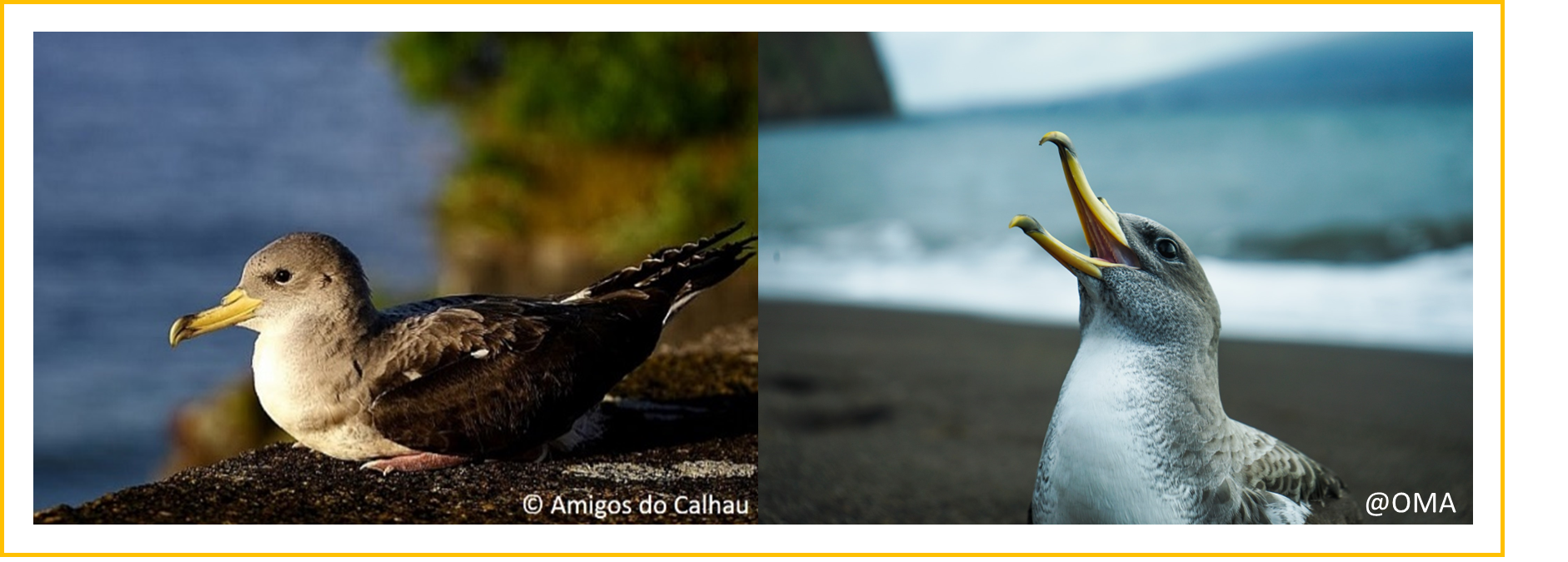
Morphology
Cory’s shearwater is one of the largest seabirds in the archipelago (larger than a seagull), with dark plumage on top and light plumage underneath.
Its back has gray-brown plumage and its belly is white. This seabird has a strong, yellow beak.
Winter at sea
These seabirds feed on squid, fish, and crustaceans (e.g., crabs), diving up to 20 meters. They often feed alongside dolphins and tuna, which helps them capture food at shallow
Cory’s shearwaters are highly adapted to a marine lifestyle, being excellent fliers capable of gliding over the waves for hours with minimal wing flapping.
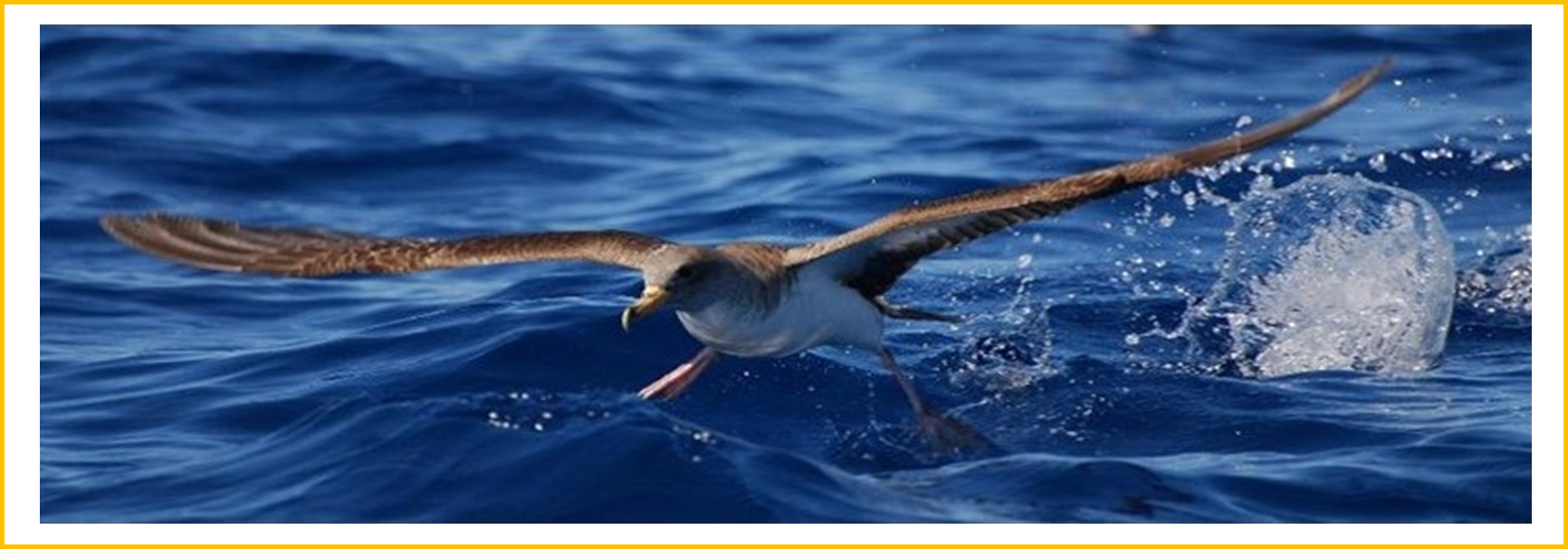
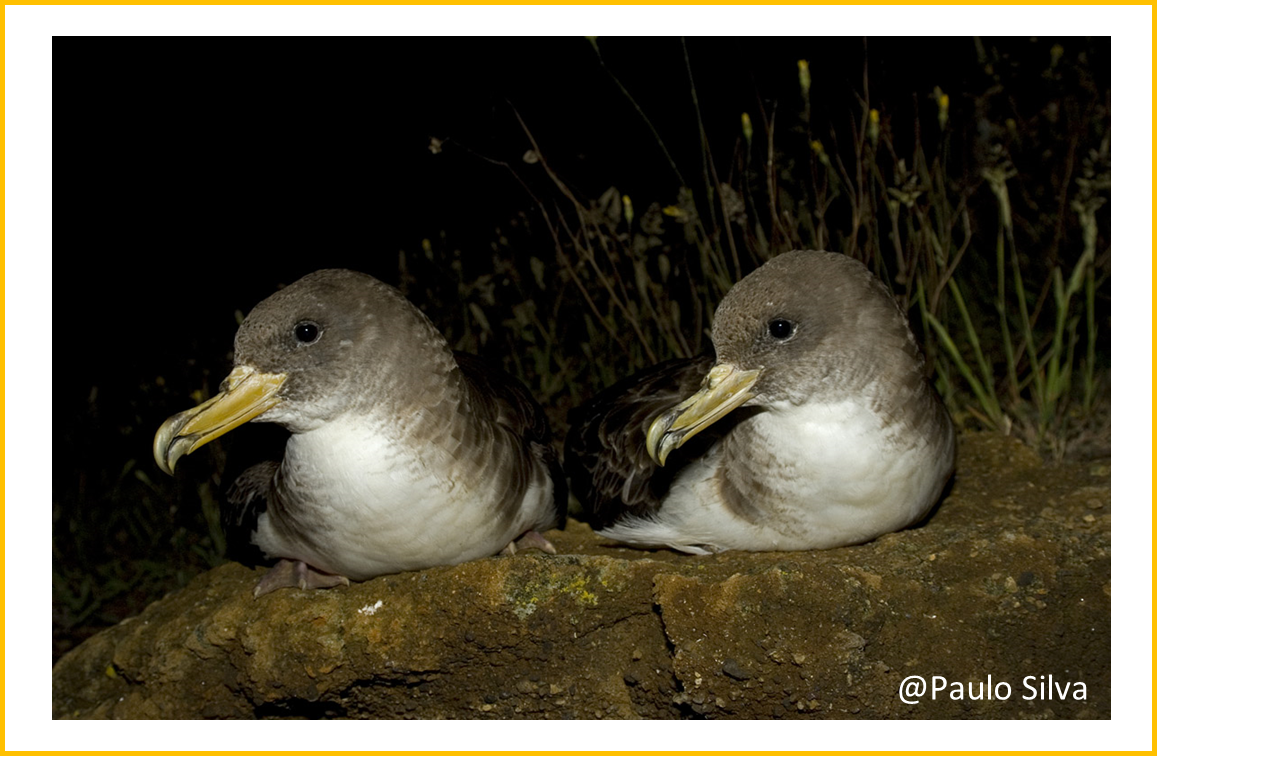
Mating and nesting
The breeding season is long, lasting eight months. From late February to May, pairs maintain and defend their nests, revisiting and occupying them year after year. The bond between the pair, which usually lasts for life, is strengthened during these encounters. Nests are located in crevices in rocks and natural cavities in the ground, providing protection for adults, eggs, and offspring. In late May, the female lays a single egg, which both parents incubate in alternate shifts of around 55 days. By the end of July, chicks hatch and grow rapidly.
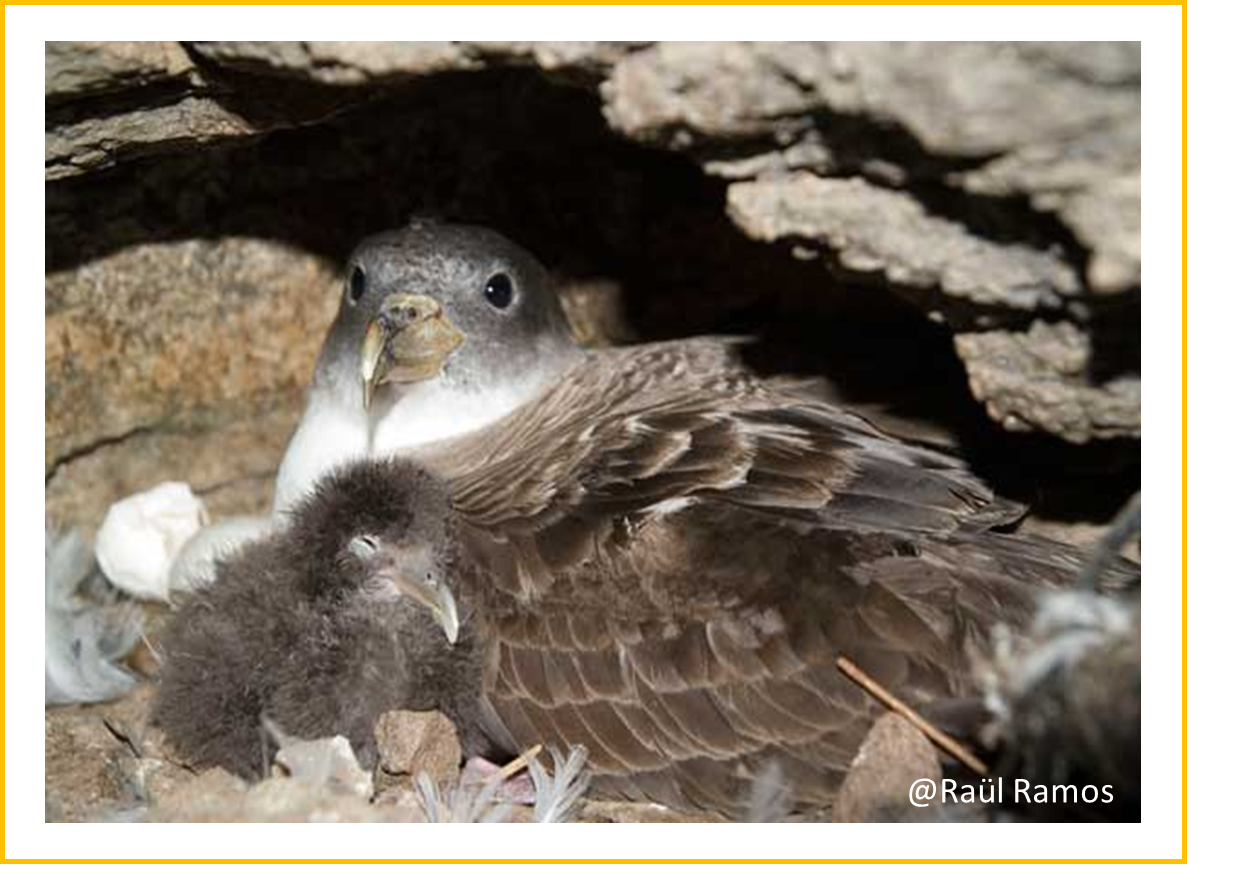
The first great journey of Cory's shearwater
When juvenile Cory’s shearwaters reach around 90-95 days old (± 3 months), they leave the nest for the first time (between October and November) and head to the sea for their first long journey of thousands of kilometers across the Atlantic Ocean. On this first journey to the sea, Cory’s shearwaters (which apparently navigate using the stars) can be disorientated by artificial lights and face many dangers (predation, vehicle collisions, entanglement in structures, etc.). When successful (fortunately most are), they will spend their first years with other shearwaters at sea, many thousands of kilometers away from the Azores.
Conservation
The Azores are the most important breeding area for Cory’s shearwaters worldwide. It is estimated that the largest nesting population of Calonectris borealis (75%) nests here. The species is strictly protected by regional, national, and international laws (Birds Directive and Convention on the Conservation of European Wildlife and Natural Habitats – Bern Convention).
Preserving Cory’s shearwaters in the Azores is crucial due to their ecological importance. They play a key role in the marine ecosystem, regulating fish and other marine populations. Their presence also reflects the health of the oceans, making them valuable indicators of possible environmental changes.

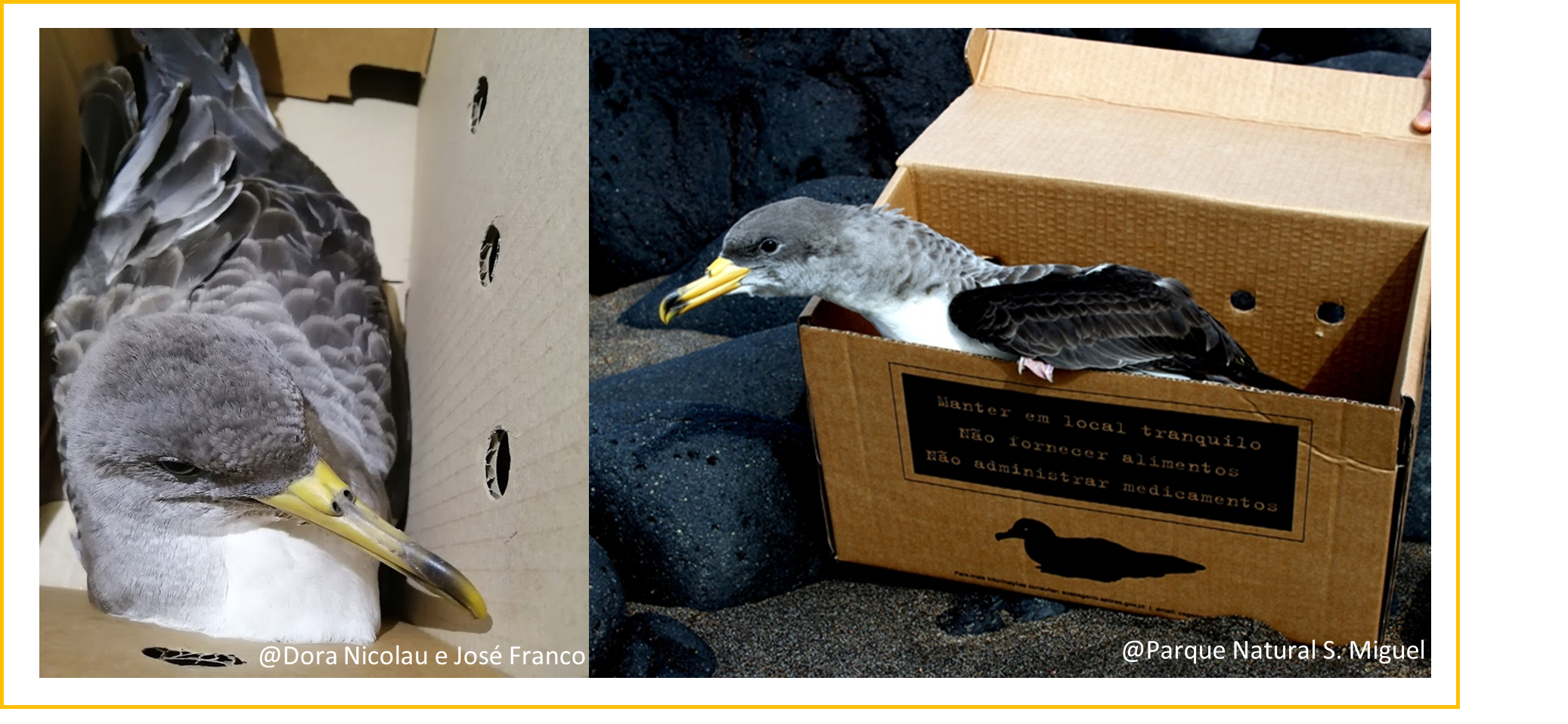
The importance of protecting Cory's shearwaters in the Azores
The Azores have an additional responsibility for conserving this species. Although it inhabits the entire Atlantic, the Azores host the largest number of returning Cory’s shearwaters each year to reproduce.
Unfortunately, they still face several threats:
-
destruction of nesting habitat due to invasive species, urban expansion, and coastal road networks;
-
high mortality (during fall) from light pollution, leading juvenile shearwaters being run over and hit by vehicles on roads and urban areas, or vulnerable to predation by introduced mammals (e.g., cats, rats, and ferrets);
-
capture and killing of adults and chicks for bait, food, or vandalism;
All help is important!
For more photos of this remarkable bird, visit:
https://siaram.azores.gov.pt/fauna/aves/aves-marinhas/cagarro/_intro.html
